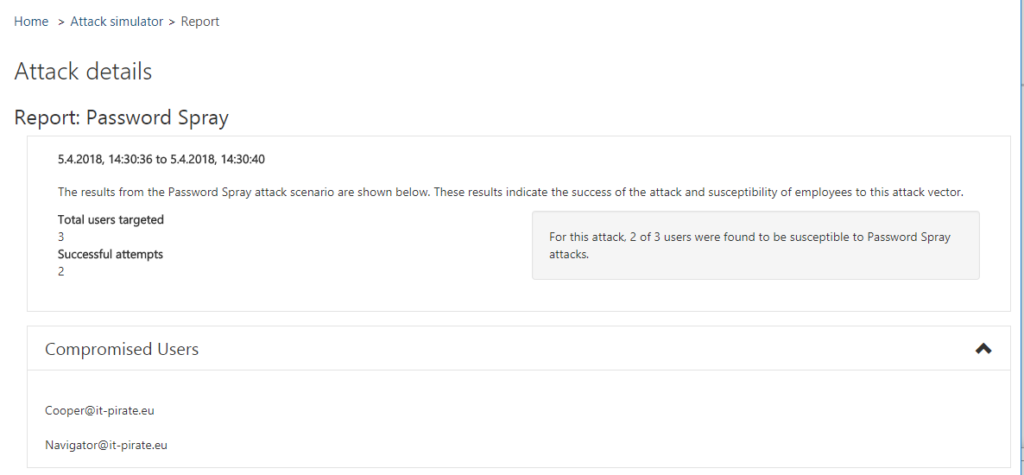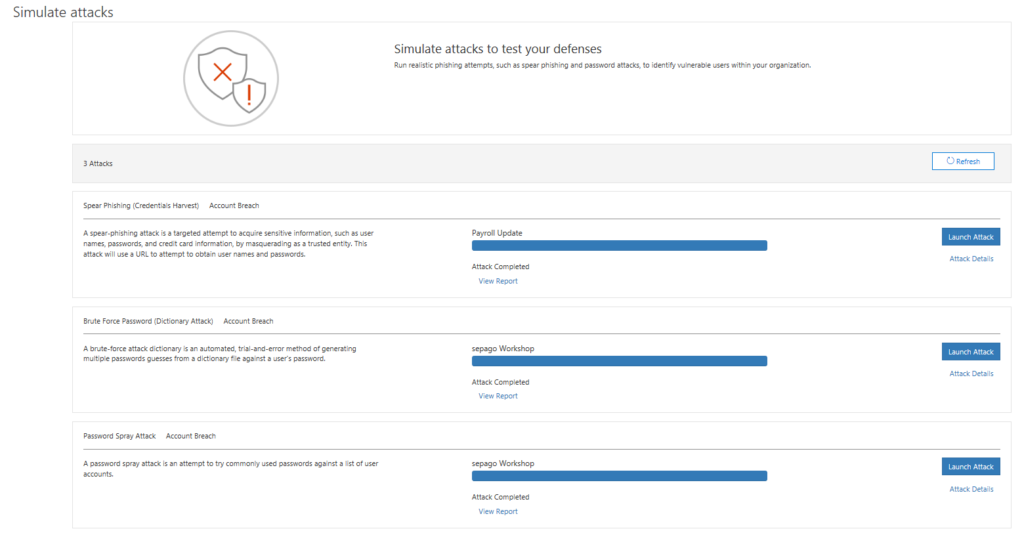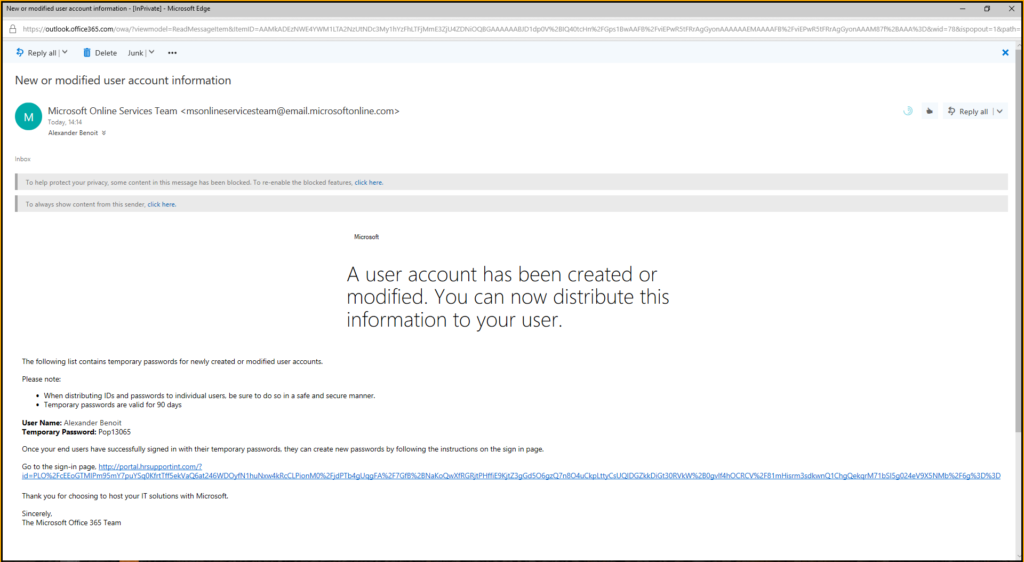Attack Simulator for Office 365 Threat Intelligence – Password Spray Attack
Pirate,
the third attack simulation method is a password spray attack. In a password-spray attack, a hacker tests a single password against multiple user accounts at an organization. The method often involves weak passwords, such as Winter2018 or Password123!, and can be an effective hacking technique against organizations that are using single sign-on (SSO) and federated authentication protocols, but that haven’t deployed multi factor authentication.




